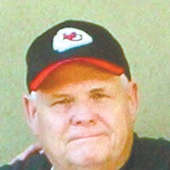The Kitchen
My grandmother, Helen Hart, prided herself on being a good cook. In her country style kitchen during my early childhood years, you were treated to many sights and smells. Memories of that kitchen brings warm thoughts to me during this long winter.
Her kitchen was old style. You can still find these in many of the older homes in Nevada. Most homes today have a set of floor cabinets, and above that a set of wall cabinets. In this older cabinet system, there was a third row of smaller cabinets mounted above the regular wall system. You could only access these doors by using her special kitchen stepstool, which had three flat steps.
Unlike most modern day kitchens, the only built-in appliance was the kitchen sink. It was a basic white, and unlike modern kitchens, it had no garbage disposal. Not to worry, in that era food scraps were either kept to feed some animals, or placed in a compost heap for fertilizer on the garden.
The rest of the appliances were what we called freestanding. The refrigerator was located right at the end of the cabinets as you came in the back door. There were no upper cabinets above the "fridge."
Grandmother Hart's kitchen stove stood alone along one wall. It was larger than most stoves/ovens of today, measuring at least 40 inches. It was all white, and of course, gas. I don't think she would have been able to cook on the early electric model stoves that were beginning to come on the market back then, much less these new glass top affairs.
Between the refrigerator and the end of the cabinets there was a cart that held one of those white electric roasting ovens. As far as I can remember, these were the actual features of her kitchen, both fixed and mechanical. From this kitchen however, a multitude of wonderful food was delivered.
Her kitchen was located at the very back of her house. As you moved from the kitchen, you passed through a full cafe swinging door. I loved that door. You could have your arms full, and still pass easily through that door in either direction, barely breaking stride.
Between what we called the dining room and the kitchen, was a narrow set of two rooms, divided by a walkway. On your left as you passed through these narrow rooms was the "nook." The nook was just wide enough to allow for a kitchen table and chairs, but there was not even 1 inch of excess room for sure.
This was where you ate the majority of the wonderful meals at Grandmother's, breakfast through dinner. If she had company, there was a large Duncan Fife dining table in the next room, known as the "dining room."
A few memories about the nook. Grandmother, like so many of her generation, left a lot of food and condiments on the table during the day and were only covered by a table cloth. Besides left over food, you could always find butter, jam, jelly, honey, and sorghum molasses. Grandmother was an old school southern style cook. She did not think you could prepare this style of food without sorghum and another southern staple, lard.
There was a small window above the table in the nook. On the ledge of this window was one of my favorite childhood items, "The Indian." "The Indian," was a very small statue of an Indian Chief. I don't know where she found him, but he became Grandmother's weather man. His Indian apron would change colors with the weather. I am sure this had to do somehow with air pressure or humidity, but she religiously watched and predicted the weather from the color change on the apron. Below his apron were the words:" Apron Blue, sky is too. Apron Pink, weather stink."
Opposite the nook was another narrow passageway leading to the hallway for the bedrooms and bathroom. On each side of this hallway were built-in hutches for dishware. There were glass doors above to hold dishes. Below, were larger doors and drawers that held many items. Grandmother had a nice dining room hutch in the actual dining room that held her good china, but these built-ins were well used.
Grandmother Helen never used any Teflon, I am sure. Her cooking gear was mostly cast iron and stainless steel pots and pans. I know some people think they can replicate those old southern-style foods in non-stick skillets on glass top stoves. Trust me, you can't. I can still see her set the gas to the tiniest setting, which she used for her "simmering."
Two of my favorite food items she cooked in one of those large cast iron skillets were her fried potatoes, and her homemade corn bread. I defy you to pan fry sliced potatoes in one of today's skillets and get the same texture.
Grandmother Hart also made her own homemade bread in that country-style kitchen. In her refrigerator she kept what she called her "starter." It had something to do with the yeast that was used to produce the bread.
She usually made loaves of bread, and her famous light rolls, on bread making day. These loaves and rolls had risen to tremendous heights, probably twice the size of store bought bread. Is there a better kitchen aroma than that of warm, freshly-baked bread right from the oven?
Those old-fashioned kitchens were not fancy, but they were designed to be productive and serve many purposes.
Close your eyes. Come on in and take a seat. While we are waiting for her to bring in her iron skillet fried chicken, take one of these homemade biscuits. Put on some real country butter and sorghum. What's that in her green beans? Oh, that's what they call a ham hock! Don't you wish you could still have a kitchen, and some southern cooking like that?

